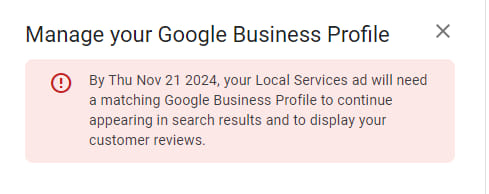
Mastering Integrated Marketing Communication: Boost Your Brand’s Consistency
BlogWhat Is Integrated Marketing Communication (And Why Your Business Needs It) Ever feel like your marketing strategy is a jumbled puzzle where none of the pieces fit? You’re posting on social media, tweaking your website, sending emails, and maybe even running ads—but instead of a symphony, it sounds more like a middle school band rehearsal? (No offense to middle schoolers. We’ve all been there.) That’s where Integrated Marketing Communication (IMC) comes in. Think of IMC as the ultimate playlist curator for your brand’s message. It ensures every channel, from your website to your TikTok videos, sings the same tune. And guess what? We’ve got some strong opinions about how to do this right—especially if you’re a small business in Los Angeles trying to stand out. At Sitelinx Organic SEO Agency, we’ve seen firsthand how blending strategies like Local SEO, WordPress SEO services, and Google Business reviews can transform chaotic marketing into a streamlined powerhouse. Let’s break down what IMC really means, why it’s not just a buzzword, and how you can stop throwing spaghetti at the wall and start cooking a Michelin-star campaign. What Exactly Is Integrated Marketing Communication? IMC is like that friend who remembers everyone’s coffee order. It’s the practice of aligning all your marketing efforts—social media, email, SEO, ads, PR—so they work together seamlessly. Instead of treating each channel as a solo act, IMC makes them backup dancers to your brand’s lead vocals. Here’s the kicker: consistency is key. Your Instagram captions should vibe with your blog posts. Your email subject lines should echo your Google Ads. And your website management? It better not look like it’s stuck in 2012. Why Should You Care About IMC? Let’s get real. If your marketing feels disjointed, your customers notice. Imagine clicking on a Facebook ad for “eco-friendly yoga mats” only to land on a website that screams “discount party supplies.” Confusing, right? IMC fixes that by: Boosting brand recognition (because repetition works, folks). Saving money (no more wasting budget on mismatched campaigns). Improving customer trust (consistency = reliability). And hey, if you’re a small business, IMC levels the playing field. You don’t need a Fortune 500 budget—just smart coordination. That’s where partnering with an SEO agency like Sitelinx helps. We’ve helped LA-based cafes, boutiques, and tech startups nail their messaging without breaking the bank. The Nuts and Bolts of IMC: Breaking It Down 1. Start With a Clear Message (No, “We’re Awesome” Doesn’t Cut It) Your brand’s core message is the foundation. Are you the best SEO company for small businesses? The go-to WordPress SEO services provider? Whatever it is, drill it into every piece of content. Pro Tip: Use tools like customer surveys or social listening to refine your message. (Or hire a marketing consultant—cough we know a great agency in LA cough.) 2. Choose Your Channels Wisely Not every platform deserves your energy. If your audience hangs out on LinkedIn, why waste time mastering TikTok dances? Here’s a quick cheat sheet: Channel Best For Google Business Local SEO & reviews WordPress Blog Long-form content & SEO Email Newsletters Nurturing leads Instagram Stories Behind-the-scenes engagement 3. Sync Your SEO and Content Strategy Technical SEO services might sound boring, but they’re the backbone of visibility. Optimize your site speed, fix broken links, and structure your content for both humans and search engines. Pair this with Local SEO tactics (like optimizing for “best coffee shop in LA”) to attract nearby customers. Fun Fact: We once boosted a client’s organic traffic by 200% just by aligning their blog topics with their Google Business reviews keywords. Magic? Nope—just IMC. 4. Measure, Tweak, Repeat IMC isn’t a “set it and forget it” crockpot recipe. Use analytics to track what’s working. Did that email campaign drive traffic to your site? Did your WordPress SEO services blog post rank for the right keywords? Adjust as you go. Common IMC Mistakes (And How to Avoid Them) We’ve seen it all—businesses that treat their social media manager like a lone wolf, or websites that haven’t been updated since the first iPhone launch. Here’s what not to do: Ignoring Mobile Users: If your site isn’t mobile-friendly, you’re basically telling 60% of visitors to bounce. Siloed Teams: Your SEO specialist and social media manager should be BFFs. Period. Forgetting Local SEO: If you’re a local business, missing out on “near me” searches is like leaving money on the table. FYI: Sitelinx offers website management packages that include technical SEO services, so you can avoid these face-palm moments altogether. “But Do I Really Need an SEO Agency?” Look, we get it. Hiring an SEO company feels like a big step. But here’s the thing: IMC requires expertise. You wouldn’t rewire your house without an electrician, right? (Unless you’re into living by flashlight. No judgment.) The best SEO companies for small business (hey, that’s us!) handle the heavy lifting: Keyword research & content planning On-page and technical SEO services Monitoring Google Business reviews and local rankings Aligning everything with your broader marketing goals Plus, we’ll make sure your WordPress site isn’t secretly sabotaging your efforts. (Spoiler: Outdated plugins are not your friend.) FAQs: Your IMC Questions, Answered Q: How long does it take to see results from IMC? A: SEO and brand building aren’t overnight successes. Give it 3–6 months for traction, but expect gradual improvements sooner. Q: Can I handle IMC myself? A: Sure—if you have 10 hours a week to spare. Most small biz owners don’t. That’s why working with an SEO specialist lets you focus on what you do best. Q: What’s the #1 thing killing IMC efforts? A: Inconsistent messaging. If your website says “affordable” but your ads say “luxury,” customers will peace out faster than you can say “brand voice.” Ready to Ditch the Chaos? Let’s Talk. IMC isn’t just a strategy—it’s a mindset. It’s about weaving your brand’s story into every tweet, email, and Google search. And while it might feel overwhelming, you don’t have to figure it out alone. At Sitelinx Organic SEO

Mastering Yahoo SEO: Proven Strategies to Boost Your Rankings
BlogYahoo SEO Optimization: Your Underestimated Secret Weapon Hey there, fellow digital enthusiasts! Let’s cut to the chase: when we talk SEO, you’re probably already rolling your eyes and muttering, “Not another ‘Google this, Google that’ lecture.” But what if we told you there’s a retro powerhouse quietly waiting to boost your traffic? Yep, we’re talking about Yahoo—the underdog of search engines that’s still kicking (and ranking). Let’s unpack why Yahoo SEO deserves your attention and how to ace it—no fluff, just actionable gems. Why Yahoo SEO Still Matters (Yes, Really) Wait, Yahoo? Isn’t that just for checking the weather or… checks notes… 90s nostalgia? Surprise: Yahoo still processes over a billion searches monthly. Its user base skews older, wealthier, and less tech-obsessed—perfect if your audience isn’t glued to Google. Plus, competition here is lower. Imagine ranking on page one without battling 10,000 other sites. Cue angelic choir. At Sitelinx Organic SEO Agency in Los Angeles, we’ve seen clients snag prime Yahoo real estate way faster than Google. Why? Fewer folks are optimizing for it. Let’s fix that oversight. Local SEO on Yahoo: Your Hidden Goldmine Yahoo’s local search game is stronger than you’d think. Their algorithm loves hyper-localized content, especially for businesses serving specific regions. Think: Keyword-rich local landing pages (e.g., “Los Angeles organic SEO services”). Consistent NAP (Name, Address, Phone) listings across directories. Google Business reviews (yep, Yahoo pulls these too—wild, right?). Pro tip: Yahoo Local Works is their business directory. Claim your profile, stuff it with details, and watch local traffic trickle in. Not sure where to start? Our team at Sitelinx lives for this stuff. We’ve helped cafes, boutiques, and even that quirky candle shop down the street dominate Yahoo’s local results. Technical SEO for Yahoo: No Rocket Science Required Yahoo’s crawlers aren’t as sophisticated as Google’s, but that doesn’t mean you can slack. Here’s the lowdown: Site speed: Yahoo hates slow sites more than we hate Monday meetings. Compress images, leverage caching, and ditch clunky plugins (looking at you, WordPress users). Mobile-first design: Over 60% of Yahoo searches happen on mobile. If your site isn’t responsive, you’re basically ghosting your audience. XML sitemaps: Submit them via Yahoo Site Explorer. It’s like giving Yahoo a treasure map to your content. WordPress fans, rejoice: Plugins like Yoast or Rank Math simplify meta tags and redirects. But if coding makes you break out in hives, our WordPress SEO services team at Sitelinx handles the dirty work. Content Optimization: Yahoo’s Quirky Preferences Yahoo’s algorithm has a sweet spot for: Long-tail keywords: Think “best organic SEO company for small businesses in LA” vs. “SEO services.” Fresh, FAQ-style content: Answer questions directly. (“How do I fix a hacked WordPress site?”) Authoritative backlinks: Yahoo values .edu and .gov links like they’re rare Pokémon cards. Fun fact: We once boosted a client’s Yahoo traffic by 200% just by rewriting their blog titles to include “how-to” phrases. Sometimes, it’s the little things. Google Business Reviews vs. Yahoo: The Unlikely Crossover Here’s a plot twist: Yahoo aggregates Google Business reviews in its local results. So, those 5-star reviews you’ve hustled for? They pull double duty. But Yahoo also has its own review system. Moral of the story: Keep your Google profile polished. Encourage happy customers to leave reviews on both platforms. Respond to negative reviews swiftly—Yahoo’s algorithm notices engagement. Why Partner with an SEO Agency? (Spoiler: We’re Biased) Look, DIY SEO is like assembling IKEA furniture without the manual. Doable? Maybe. Worth the rage? Nope. Here’s where a best-in-class SEO company (ahem, like us) steps in: Technical SEO audits: We find cracks in your site’s foundation before they become sinkholes. Keyword strategy: Because guessing what Yahoo wants is so 2004. Ongoing website management: Updates, security, backups—we’ve got your back. Not all heroes wear capes. Some write meta descriptions and fix broken links. Yahoo vs. Google SEO: The Ultimate Showdown Let’s settle this once and for all. Here’s how their SEO priorities stack up: Factor Yahoo Google Backlinks Quantity + authority Quality + relevance Content Freshness Important, but not obsessive Critical (thanks, Hummingbird) Local SEO Loves hyper-local signals Relies heavily on Google My Biz Mobile Optimization Must-have Non-negotiable FYI: Yahoo’s simpler algorithm means quicker wins—ideal for small businesses. FAQs: Yahoo SEO Unmasked 1. “Is Yahoo SEO even worth the effort?” Absolutely! Especially if your audience is 35+ or local. Lower competition = faster results. 2. “Do I need a separate strategy for Yahoo and Google?” Kinda. Basics (like mobile speed) overlap, but keyword focus and link-building differ. A savvy SEO specialist (wink) can streamline both. 3. “Can WordPress handle Yahoo SEO?” 100%. With plugins like Yoast, it’s a breeze. But if you’d rather binge Netflix than tweak schema markup, our WordPress SEO services team has your back. Wrapping Up: Yahoo’s Comeback Tour Needs You Yahoo might not be the shiny new toy, but underestimating it is like ignoring a slot machine that’s already paying out. Whether you’re a small business owner or a marketing consultant drowning in Google’s complexity, Yahoo offers a simpler path to visibility. At Sitelinx Organic SEO Agency, we’re all about working smarter, not harder. Our technical SEO services and local expertise have turned underdog sites into traffic magnets—no magic, just strategy. Ready to give Yahoo the love it deserves? Let’s chat over coffee (or Zoom, if you’re allergic to pants). Because hey, even underdogs deserve their day in the sun. 🌞

Understanding the Shift: Are GBP Reviews Replacing LSA Reviews?
BlogIs Google Replacing LSA Reviews With GBP Reviews? Let’s Break It Down Hey there, fellow SEO nerds! Have you ever felt like Google changes its rules faster than we can say “algorithm update”? Just when we finally wrap our heads around Local Service Ads (LSAs), rumors start swirling that Google Business Profile (GBP) reviews might be stealing the spotlight. Is this another case of Google shuffling the deck, or is there real substance here? Let’s grab a coffee (or a stress ball) and unpack this together. At Sitelinx Organic SEO Agency in Los Angeles, we’ve been knee-deep in Local SEO for years, helping businesses adapt to these shifts without losing their sanity. Spoiler alert: Whether you’re a bakery, a plumber, or a marketing consultant, GBP reviews are about to become your new best friend. What’s the Deal With LSA vs. GBP Reviews? First off, let’s clarify what we’re talking about. Local Service Ads (LSAs) are those handy “Google Guaranteed” badges you see for service-based businesses like HVAC companies or lawyers. They’re pay-per-lead ads that prioritize businesses with strong reviews and verification. Google Business Profile (GBP) reviews, on the other hand, are the star ratings and customer feedback tied directly to your business listing on Google Maps and Search. So why the buzz about one replacing the other? Well, Google’s been quietly testing ways to unify its platforms, and we’ve noticed a trend: GBP reviews are showing up in more places, even overlapping with traditional LSA territory. For example, some service ads now display GBP reviews alongside (or instead of) LSA-specific ratings. Is Google Actually Phasing Out LSA Reviews? Short answer: Not entirely—yet. But here’s the tea: Google’s doubling down on GBP as its central hub for local business credibility. Think of it like this: GBP is becoming the Swiss Army knife of local visibility, while LSAs are shifting toward a more niche role. Why does this matter? Simplicity: Managing one profile (GBP) is easier than juggling LSA and GBP separately. Trust: Customers recognize and rely on GBP reviews more consistently. SEO Synergy: A robust GBP profile boosts your Local SEO, which LSAs alone can’t match. At Sitelinx, we’ve seen clients who focus on GBP reviews gain better organic rankings and ad performance. It’s like getting a two-for-one deal—without the coupon clipping. The Nitty-Gritty: How GBP Reviews Are Stealing the Show Let’s get tactical. Here’s what’s changing and how to adapt: 1. Google’s Love Affair With Unified Profiles Google’s been merging features from LSAs into GBP, like service areas, booking buttons, and yes—reviews. If your GBP isn’t optimized, you’re basically leaving money on the table. Pro Tip: Update your GBP daily. Add fresh photos, respond to reviews (even the grumpy ones), and use keywords in your business description. Need help? That’s what an SEO company like ours lives for. 2. The SEO Ripple Effect GBP reviews don’t just influence customers—they’re a Local SEO goldmine. Google weighs reviews heavily in local pack rankings. More (positive) reviews = better visibility. Simple math, right? Fun Fact: One client, a dog groomer in LA, saw a 40% traffic boost after we streamlined their GBP and WordPress SEO services. Turns out, puppies and algorithms love consistency. 3. The Slow Fade of LSA-Only Strategies LSAs aren’t dead, but they’re no longer the solo act. Combining LSAs with a rock-solid GBP profile is now the winning playbook. “But Wait—What Should I Actually Do?” Glad you asked! Here’s your action plan: Audit Your GBP Profile Is every field filled out? (Including those pesky service categories?) Do you have at least 20 reviews? (No? Time to kindly ask happy clients for feedback.) Are you using Google Posts? (If not, you’re missing free promo space.) Sync LSA and GBP Efforts Use the same keywords, services, and contact info across both. Redirect LSA review requests to your GBP page. Invest in Technical SEO Services A fast, mobile-friendly site (looking at you, WordPress users) complements your GBP work. Fix crawl errors, optimize metadata, and embrace structured data. FYI: The best SEO companies for small business—like, ahem, Sitelinx—specialize in making this process painless. Just saying. The Bigger Picture: Why This Shift Matters Let’s zoom out. Google’s moves always hint at their endgame. By prioritizing GBP, they’re pushing businesses to: Be more transparent (no more hiding behind ads). Engage authentically (respond to reviews, post updates). Play the long game (SEO over quick fixes). Translation: If you’ve been treating GBP as an afterthought, it’s time for a wake-up call. And hey, if you’re overwhelmed, that’s what SEO specialists are for. Wink. Your Burning Questions, Answered Let’s tackle three common FAQs we hear at Sitelinx: Q: “Is Google deleting LSA reviews?” A: Not exactly—but they’re emphasizing GBP reviews more. Merge your strategies to stay safe. Q: “How do I improve my GBP ranking?” A: Post regularly, gather reviews, and nail your technical SEO services. Oh, and work with an SEO agency that gets it. Q: “Can I ignore LSAs now?” A: Not if you’re in a competitive industry! Use LSAs for instant visibility, but build your GBP for lasting results. Wrapping Up: Don’t Panic—Optimize! So, is Google replacing LSA reviews with GBP? Kinda, sorta, maybe. The real takeaway? GBP is your foundation, and everything else (LSAs, ads, even your WordPress website management) should orbit around it. At Sitelinx Organic SEO Agency, we’ve helped dozens of LA businesses pivot without missing a beat. Whether you need a marketing consultant to strategize or an SEO specialist to handle the dirty work, we’ve got your back. Final thought: Google’s gonna Google. But with a little humor and a lot of grit, we can keep our businesses thriving. Now, go update that GBP profile—or let us do it for you. 😉 Need a hand? Reach out to Sitelinx Organic SEO Agency—we’re here to turn Google’s chaos into your competitive edge. Let’s chat!

Ultimate Guide to Starting a Successful Landscaping Business in 2025
How ToHow to Start a Landscaping Business (Without Losing Your Mind or Your Shovel) Let’s be honest: if you’re here, you’re probably the type who’d rather dig a 50-foot trench than sit through a business seminar. We get it—soil under your nails beats spreadsheets any day. But here’s the kicker: turning your green thumb into greenbacks means balancing passion with strategy. Don’t worry, though. We’ve got your back. By the end of this guide, you’ll know how to launch a landscaping business that thrives, whether you’re pruning hedges in Pasadena or laying sod in Santa Monica. And hey, if the marketing side makes your head spin faster than a leaf blower, we’ll toss in a few secrets from our pals at Sitelinx Organic SEO Agency—a killer SEO company in Los Angeles that’s helped folks like us dominate local search. Step 1: Plan Like a Pro (Because Wingin’ It Works Until It Doesn’t) Starting a landscaping biz isn’t just about mowing lawns and hoping Venmo notifications roll in. You need a roadmap. Pick Your Niche Are you the “designer” type who dreams of backyard oases? Or the “get-it-done” warrior who thrives on hardscaping? Here’s the deal: Residential vs. Commercial: Residential clients pay well but expect personalized service. Commercial gigs offer steady contracts but might require heavy equipment. Specialization: Drought-tolerant gardens? Artificial turf? Fire pits? Own a niche, and you’ll stand out in a sea of generic “lawn guys.” Crunch the Numbers Let’s talk startup costs. Spoiler: It’s not just shovels and seeds. Expense Low-End High-End Tools & Equipment $1,500 $10,000+ Vehicle (Truck/Trailer) $5,000 $30,000 Insurance $500/yr $2,000/yr Marketing $0 $5,000+ FYI: That “$0” marketing budget? That’s where Local SEO and Google Business reviews come in clutch. More on that later. Step 2: Legit-ify Your Business (Yes, That’s a Word Now) Legal Stuff You Can’t Ignore LLC vs. Sole Proprietorship: LLCs protect your personal assets when clients trip over your rake (trust us, it happens). Licenses: California requires a C-27 landscaping license. No shortcuts here—unless fines are your idea of fun. Insurance: General liability + workers’ comp if you hire a team. Bank Accounts Are Boring. Get One Anyway. Mixing business and personal funds is like using a chainsaw to trim bonsai trees—messy and dangerous. Open a business account, and thank us later. Step 3: Tools of the Trade (Or: How to Avoid Buying Junk) Essential Gear for Newbies Basic Tools: Shovels, pruners, wheelbarrow (the holy trinity). Power Equipment: Invest in a quality mower and trimmer. Cheap ones break faster than a New Year’s resolution. Safety Gear: Gloves, goggles, and steel-toe boots. Because ER visits aren’t tax-deductible. Pro Tip: Buy used equipment on Facebook Marketplace. Just avoid anything that looks like it survived a zombie apocalypse. Step 4: Branding That Doesn’t Suck (Yes, This Matters) Name Your Biz Like a Boss Skip “Bob’s Landscaping.” Be memorable: Urban Oasis Landscaping or Desert Bloom Designs. Logo & Colors Keep it simple. Earth tones = trustworthy. Neon green = “Are we running a rave or a business?” Website: Your Digital Storefront Here’s where most landscapers drop the ball. A WordPress site is cheap, customizable, and perfect for showcasing before/after photos. But if coding makes you sweat, hire a WordPress SEO services pro (like our friends at Sitelinx). They’ll handle website management, technical SEO services, and make sure Google actually finds you. Step 5: Marketing That Doesn’t Feel Like Homework Google Business Profile: Your New Best Friend 90% of clients will find you via Google. Claim your profile, add photos, and beg for reviews. Sitelinx Organic SEO Agency (shameless plug alert) optimizes these profiles so you rank higher than competitors still using AOL email. Social Media: Less Dancing, More Landscaping Post client transformations on Instagram. Share tips on TikTok. Tag local neighborhoods (#ShermanOaksGardens). But don’t overthink it—authenticity beats viral trends. Old-School Hustle Door hangers in upscale neighborhoods. Partner with nurseries or real estate agents. Step 6: Pricing: The Art of Not Going Broke Charge What You’re Worth Undercutting competitors might fill your calendar, but you’ll burn out faster than a match in a monsoon. Pricing Models Hourly: Great for small jobs ($50–$100/hr). Project-Based: Bid high for complex designs. Maintenance Contracts: Steady income for weekly mowing. Bonus: Use Sitelinx’s SEO services to attract clients willing to pay premium prices. Their SEO specialists target high-value keywords so you’re not stuck racing to the bottom. Step 7: Scale Without Losing Your Soul Hire Help (But Be Picky) Your first hire shouldn’t be your cousin’s roommate who “likes plants.” Look for reliability over charm. Systems Are Sexy Scheduling Software: Tools like Jobber automate invoices and reminders. CRM: Track client preferences (“Mrs. Johnson hates hydrangeas”). Expand Services Add seasonal offerings like holiday lighting or snow removal (yes, even in L.A.—global warming’s weird). 3 Questions Every New Landscaper Asks (Answered) 1. “Can I start without experience?” Sure! Start small—mow lawns, pull weeds. Take online courses or partner with a mentor. Fake it till you make it (but don’t fake knowing how to operate a backhoe). 2. “How long until I profit?” Most businesses take 1–2 years. Speed it up with Local SEO to attract clients faster. Sitelinx is one of the best SEO companies for small business—they’ll get you ranking while you focus on sod. 3. “What if competitors undercut me?” Compete on quality, not price. Use Google Business reviews to showcase your 5-star work. Clients pay more for reliability. Final Thought: Let’s Grow This Thing Starting a landscaping biz is equal parts sweat and strategy. Nail the basics, then let Sitelinx Organic SEO Agency handle the techy stuff—because life’s too short to fight with WordPress plugins or Google algorithms. They’re the best SEO agency in L.A. for a reason: they make marketing consultants look like amateurs. So, what’s next? Grab a shovel, build that site, and when you’re ready to crush local search, hit up Sitelinx. Tell them we sent you—they might even throw in a free audit (or at least a decent meme). Now go get dirty. 🌱

Ultimate Guide to Starting a Successful Roofing Company in 2025
How ToHow to Start a Roofing Company (Without Falling Off the Ladder) Hey there, future roofing mogul! Thinking about trading your 9-to-5 for a life of shingles, ladders, and finally being your own boss? Let’s hammer out the details together. Starting a roofing company isn’t just about nailing down contracts—it’s about building a business that stands strong against storms, competitors, and Google’s ever-changing algorithms. (Yep, we’re looking at you, Local SEO.) At Sitelinx Organic SEO Agency here in Los Angeles, we’ve helped plenty of tradespeople like you turn their hustle into a legit empire. And trust us—if you skip the digital groundwork, you’ll be leaving money on the table (or worse, letting it slide right off the roof). Let’s break this down step by step. Laying the Foundation: Business Basics First things first: you need a solid business plan. Not the 50-page corporate snoozefest, but a clear roadmap that answers: What services will you specialize in? (Residential? Commercial? Thatched roofs for medieval enthusiasts? Hey, niche markets exist.) Who’s your competition, and how will you outshine them? What’s your pricing strategy? Spoiler: “Cheapest in town” is a race to the bottom. Licenses and insurance aren’t glamorous, but neither is a lawsuit. Check your state’s requirements—most demand a contractor’s license and liability insurance. Pro tip: Get workers’ comp even if it’s just you. Falling off a ladder alone is bad enough; doing it without coverage? Oof. Building Your Brand: More Than a Cool Logo Your company name matters. Keep it simple, memorable, and roof-specific. (Unless you want to be known as “Bob’s Roofing and Random Side Hustle.”) Once that’s sorted: Design a website that doesn’t suck A roofing company without a website in 2024 is like a hammer without a handle—useless. Use WordPress. Why? It’s flexible, affordable, and with plugins like Yoast, even your cousin’s dog could handle basic WordPress SEO services. Bold move: Hire a marketing consultant to help with branding. Colors, fonts, and messaging should scream “reliable pro,” not “guy who watched a YouTube tutorial.” Marketing: Where the Magic (and Roofing Leads) Happens Here’s where most newbies faceplant. You can’t just slap a magnetic sign on your truck and pray. You need a mix of old-school hustle and digital savvy. Local SEO: Your New Best Friend Why bother with Local SEO? Because when someone Googles “roofing company near me,” you want to be the first name they see. Optimize your Google Business Profile, gather Google Business reviews like they’re Pokémon cards, and embed a map on your website. FYI: At Sitelinx, we’ve seen roofing companies double their leads in 3 months just by fixing their technical SEO services. Broken links, slow load times, and mobile-unfriendly sites are lead killers. Paid Ads: The Quick Fix Google Ads and Facebook targeting can get you immediate visibility. But here’s the catch: if your website isn’t optimized, you’re just burning cash. Pair ads with solid SEO services for a one-two punch. Operations: Don’t Trip Over Your Own Tools Hiring a crew? Start small. Hire subcontractors for your first few jobs to avoid payroll headaches. Equipment is pricey—lease until you’re turning consistent profit. Software saves lives (or at least your sanity): Job management tools like JobNimbus or Roofr Accounting software like QuickBooks CRM systems to track leads (HubSpot’s free tier is gold) The Digital Toolbox: SEO and Beyond Let’s get real: If you’re not online, you’re invisible. Here’s what the best SEO companies for small business (like ours cough) recommend: Essential Tools for Roofing Startups Business Setup: Licenses, insurance, LLC registration Marketing: Google Ads, Facebook, Local SEO Website: WordPress, Yoast SEO, mobile optimization Operations: Job management software, CRM, invoicing tools WordPress SEO services are non-negotiable. Optimize your service pages with keywords like “emergency roof repair [Your City]” or “metal roofing installation.” Blog about common issues (e.g., “How to Spot Hail Damage”) to build authority. And hey, if coding makes your head spin, hire an SEO specialist. Companies like Sitelinx handle everything from website management to content creation—so you can focus on, y’know, actual roofing. 3 Questions Every New Roofer Asks (And Our Answers) “Do I really need a website?” Unless your target audience is Amish communities, YES. Even a simple WordPress site with your contact info and services builds credibility. “How do I compete with big roofing companies?” Lean into Local SEO and hyper-targeted ads. Big companies suck at personalized service—you don’t. “When should I hire an SEO agency?” Yesterday. Kidding (mostly). If you’re spending hours on Google Analytics without results, call a pro. Sitelinx Organic SEO Agency specializes in turning roofing startups into local legends. End shameless plug. 🙂 Wrapping Up: Don’t Let Your Business Go Down the Gutter Starting a roofing company is equal parts grit, strategy, and embracing the digital world. Build a killer website, dominate Local SEO, and for the love of dry attics, track your ROI. And if you’re feeling overwhelmed? That’s what the best SEO companies are for. Sitelinx offers everything from technical SEO services to reputation management—because even roofing bosses need backup. Ready to nail this? Grab your toolbox, optimize your site, and let’s get you on top of Google’s search results. (And maybe a few rooftops too.) Need a hand? Contact Sitelinx Organic SEO Agency for a free consultation. We’ll handle the digital heavy lifting—you handle the hammers. 🛠️

Top Strategies to Rank Higher on Google Search Results
BlogHow to Be on Top of Google Search Results (Without Selling Your Soul to the Algorithm) Let’s cut to the chase: we’ve all Googled ourselves. Admit it. And if your website isn’t on page one, it might as well be hiding in a digital witness protection program. But here’s the good news—getting to the top of Google isn’t magic. It’s a mix of strategy, sweat, and maybe a little help from your friends (like us at Sitelinx Organic SEO Agency in Los Angeles). Ready to crack the code? Let’s roll. Keyword Research: The GPS for Your SEO Journey You wouldn’t road-trip without a map, right? Keywords are your map. They tell Google what your site’s about and connect you with folks typing queries into that little search bar. But here’s the kicker: not all keywords are created equal. Tools We Swear By: Ahrefs or Semrush (pricey but worth it). Google Keyword Planner (free, but bring patience). AnswerThePublic (for finding “what do people even ask?” moments). Pro Tip: Long-tail keywords (like “best vegan taco spots in LA”) are gold. They’re specific, less competitive, and attract ready-to-buy visitors. FYI, this is where Local SEO shines—especially if you’re a small biz trying to stand out in a city packed with competitors. On-Page SEO: Where Content Wears the Crown Google’s a picky eater. It craves content that’s fresh, relevant, and stuffed with value (not keywords—we’re looking at you, 2008). Here’s how to make your pages irresistible: Title Tags & Meta Descriptions: Write these like you’re crafting a movie trailer. Tease the good stuff. Headers (H1, H2, H3): Break up text so readers (and Google’s bots) don’t snooze. Internal Links: Guide visitors to related content on your site. Think of it as a “choose your own adventure” game. WordPress Users, Rejoice! Plugins like Yoast SEO turn on-page optimization into a checklist even your cat could follow (well, almost). Technical SEO: The Boring Stuff That’s Secretly Sexy Imagine your website is a car. Technical SEO is the engine. No one sees it, but if it’s broken, you’re going nowhere. Quick Wins: Speed Matters: If your site loads slower than a dial-up modem, fix it. Tools like GTmetrix or PageSpeed Insights help. Mobile-Friendly Design: Google’s mobile-first indexing means your site better look 🔥 on phones. Fix Crawl Errors: Broken links? 404 pages? Use Screaming Frog to hunt them down. Confession: Technical SEO makes even us want to nap sometimes. That’s why partnering with an SEO agency (like, oh, I don’t know… Sitelinx?) saves sanity. We handle the nitty-gritty while you focus on your biz. Local SEO: Be the Big Fish in Your Pond If you’re a local business, Google Business reviews are your best friend. More reviews = more trust = higher rankings. But don’t just sit there—ask happy customers to leave feedback! Local SEO Checklist: Claim and optimize your Google My Business profile. Get listed on directories like Yelp, Apple Maps, and niche sites. Use location-based keywords (“SEO company Los Angeles”). Shameless Plug: Our team at Sitelinx lives and breathes Local SEO. We’ve helped bakeries, plumbers, and even a llama groomer dominate their markets. 🦙 Content Quality: Why “Good Enough” Isn’t Enough Google’s algorithm updates (looking at you, Helpful Content Update) reward content that solves problems. So skip the fluff and answer questions your audience actually has. Evergreen vs. Trendy Content: Evergreen: “How to Fix a Leaky Faucet” (always relevant). Trendy: “TikTok Marketing Hacks 2024” (enjoy the 15 minutes of fame). Mix both, but lean into evergreen for steady traffic. And hey, if writing isn’t your jam, hire an SEO specialist (waves awkwardly). DIY vs. Hiring the Best SEO Company: A Brutally Honest Comparison Factor DIY SEO Hiring an SEO Agency Cost Cheap (but time-consuming) Higher upfront, but ROI-focused Expertise You’re Googling how to Google Pros with years of experience (like us!) Time Commitment Say goodbye to weekends You sip coffee while we work Results Hit-or-miss (mostly miss) Consistent, strategic growth IMO, unless you’re an SEO geek, outsourcing to an SEO company lets you focus on what you actually enjoy—like running your business. FAQs: Your Burning Questions, Answered 1. “How long until I see results?” SEO’s a marathon, not a sprint. Usually 3–6 months for traction. But hey, good things come to those who wait (and optimize). 2. “Do Google Business reviews really matter?” Absolutely. They’re social proof and a ranking factor. Plus, would you trust a biz with 2 stars? 3. “Is WordPress good for SEO?” 100%. It’s customizable, SEO-friendly, and plugins make life easier. Just keep it updated—security matters! 4. “How do I choose the best SEO company?” Look for transparency, case studies, and no shady “guaranteed #1” promises. Ahem We’re biased, but Sitelinx ticks all those boxes. Wrapping Up: Your SEO Game Plan Let’s recap: Nail keyword research. Optimize on-page content. Fix technical gremlins. Dominate locally. Publish killer content. And if you’re overwhelmed? That’s what we’re here for. At Sitelinx Organic SEO Agency, we eat, sleep, and breathe SEO—so you don’t have to. Final Thought: Climbing Google’s rankings isn’t about tricking the system. It’s about playing the long game, staying consistent, and maybe letting a pro (hi) handle the heavy lifting. Ready to see your site on page one? Let’s chat. 🙂
